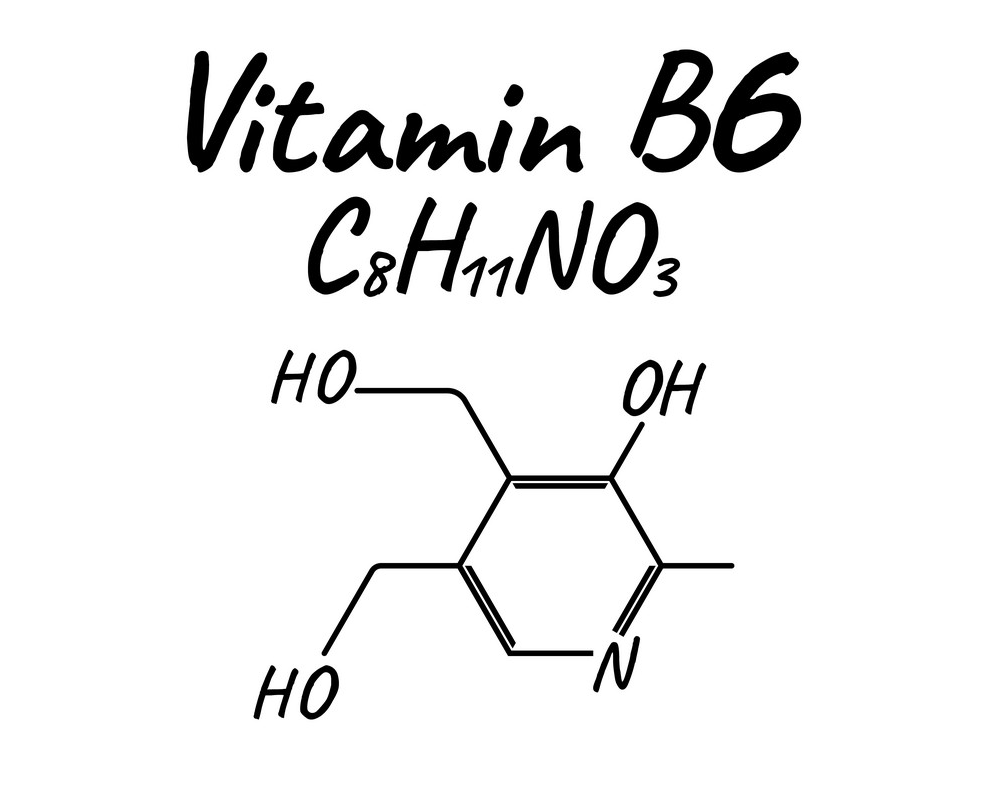
Pyridoxine (B6), is a micronutrient which serves as a coenzyme in over 100 enzymes (Grooper, Smith, & Carr, 2018). Furthermore, its primary role is found in the metabolism of glucose, carnitine, neurotransmitters, heme, nucleic acids, sphingolipids, and amino acids (Gropper et al., 2018). Considering B6’s integral role as a coenzyme and its involvement in energy/neurotransmitter production, one should consider the sources of B6 and the digestibility of said micronutrient to maximize absorption. The following will explore the same.

Roth-Maier, Kettler, and Kirchgessner (2002) conducted a study to investigate the digestibility of B6 from common food sources consumed by humans. Furthermore, Roth-Maier et al. (2002) pursued such a study to discriminate differences between B6 content in food and the digestibility/bioavailability of the same once ingested. Such foods included: soybean meal, rye, brewer’s yeast, wheat bran, brown rice, soybeans, barley, fish, milk powder, corn, white cabbage, bananas, and eggs (Roth-Maier et al., 2002). The researchers used pigs to monitor B6 digestibility as domestic pigs have been validated as an appropriate experimental model for the same (Roth-Maier et al., 2002).

Three experiments were performed which used three, six, and three male growing pigs, respectively (the pigs’ initial bodyweight fell between 33-40 kg). One potential limitation the researchers had to address was the ability of the colon to produce B6; such a process would likely increase the levels of B6 measured making it difficult to discriminate between exogenous and endogenous B6 (Roth-Maier et al., 2002). To circumvent such a problem, Roth-Maier et al. (2002) used a surgical technique that allowed the digested foods to bypass the colon (i.e., ilium to rectum) known as ileo–rectal anastomosis. The following will consider the methods and findings of the researchers’ study.

In each of the three experiments, the pigs received diets with different combinations of plant and animal foods. Each particular diet was fed to each pig for 12 days and experimental periods occurred 4-9 and 12-17 weeks after the ileo–rectal anastomosis surgery (Roth-Maier et al., 2002). Fecal samples were collected under dim light during the last 5 days of each 12-day trial, stored at -20°C, and eventually freeze-dried to preserve B6 vitamin content. Once analyzed, the researchers were able to categorize the B6 concentration in the chyme, dietary intake of B6, and pre-caecal (chyme just before large intestine) (Roth-Maier et al., 2002).

Results indicated that pre-caecal B6 levels ranged from 51-91% with the following outlining the most digested to the least digested B6 in foods: cabbage diet > banana diet > fish diet > milk powder diet > brewer’s yeast diet > soybeans diet > soybean meal diet > egg diet/corn diet > barley diet > wheat bran diet > rye diet (Roth-Maier et al., 2002). Furthermore, Roth-Maier et al. (2002) indicated that animal sources of B6 were better digested than plant-based sources (i.e., plant-based was 10% lower than animal-based B6). In particular, brown rice had the lowest pre-caecal digestibility (only 16%) of all sources.
In conclusion, appreciating the digestibility of B6 in common foods from the human diet is of relevance because such data can help inform and direct optimal choices (i.e., cabbage digests B6 to a greater extent than brown rice) of such a micronutrient when deemed necessary (i.e., if a B6 deficiency is elucidated). Ultimately, such knowledge underscores the limitations of popular foods (over half of the world population consumes rice, yet rice provides the least opportunity for digestion of B6) helping encourage the inclusion of other B6-rich sources that are more digestible (Roth-Maier et al., 2002).
References
Gropper, S. S., Smith, J. L., & Carr, T. P. (2018). Advanced nutrition and human metabolism (7thed.). Boston, MA: Cengage Learning.
Roth-Maier, D. A., Kettler, S. L., & Kirchgessner, M. (2002). Availability of vitamin B6 from different food sources. International Journal of Food Sciences and Nutrition, 53(2), 171-179.
-Michael McIsaac
